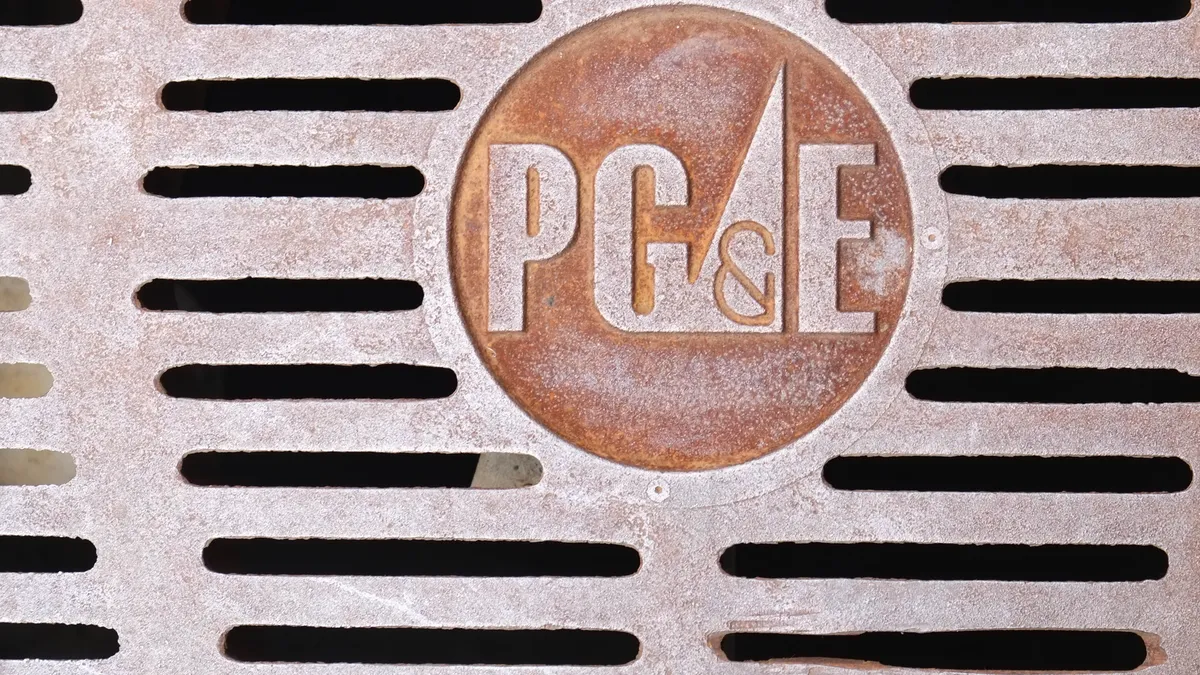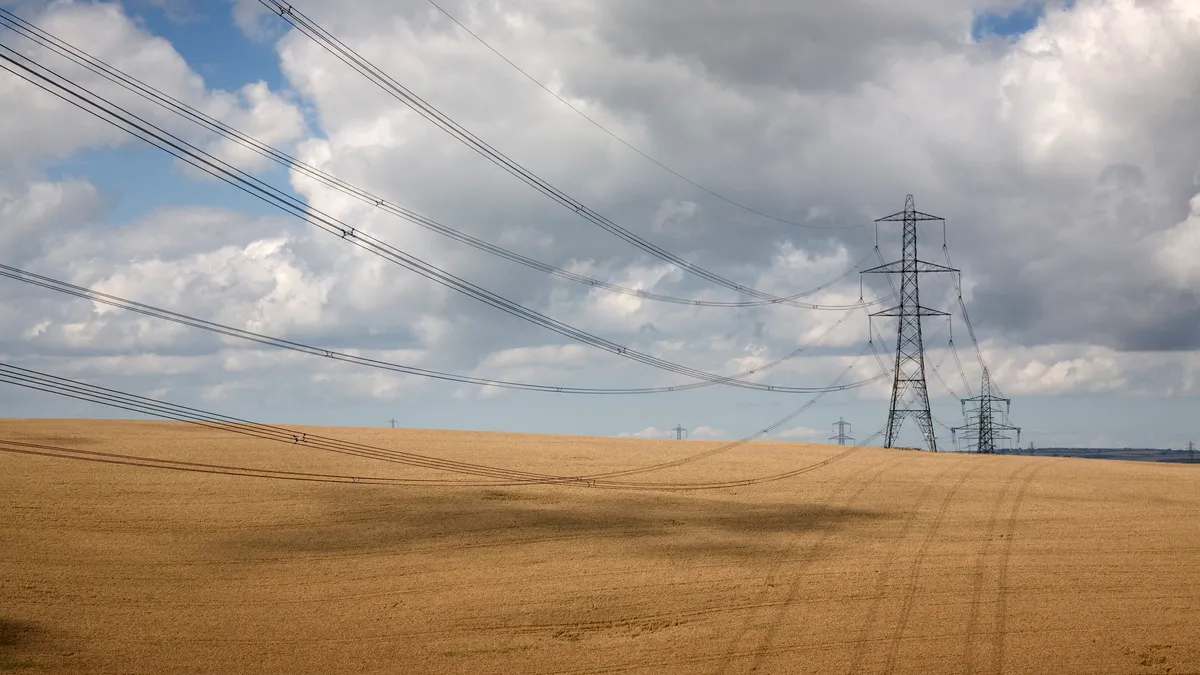Northern California’s 2019 wildfire season is effectively over, following storms and snowfall over the Thanksgiving weekend, and experts agree that Pacific Gas & Electric (PG&E) managed to avoid the worst-case scenario.
A majority of California Department of Forestry and Fire Protection’s units have declared the end of the 2019 fire season, according to Deputy Chief Scott McLean. PG&E, meanwhile, is transitioning from focusing on just wildfire prevention to prepping for winter storms.
The 2019 wildfire season wasn't easy for the beleaguered utility. It included a spate of public safety power shut-offs (PSPS) that left millions of Californians without electricity for days, and the utility’s power-lines are suspected to have sparked the Kincade Fire, which burned nearly 78,000 acres in Sonoma county, in October. But PG&E met its high-level objective of preventing another catastrophic wildfire, utility spokesman Paul Doherty told Utility Dive.
“That’s really the sole reason for doing PSPS — we want to make sure there’s no deadly wildfires throughout our service area, so I think we met that goal,” he added.
But PG&E is still facing a host of challenges going into 2020. Company reports filed with the California Public Utilities Commission (CPUC) indicate that its electrical systems are still prone to sparking fires when they’re energized. It is saddled with billions of dollars in liability from the 2017 and 2018 fires, as well as an attempted corporate takeover by its bondholders in its ongoing bankruptcy proceeding. PG&E has a little over six months to deal with these challenges. Under AB 1054, legislation passed in September, the utility needs to exit bankruptcy by June 30, 2020, to participate in the state’s newly-created wildfire insurance fund.
“This company just has endless amounts of challenges. You know a company is troubled when you try to make a list of the problems that they face and being in bankruptcy doesn’t make the top five,” Jared Ellias, professor at U.C. Hastings College of Law, told Utility Dive.
‘Between a rock and a hard place’: PG&E’s grid plagued by systemic problems
“My after-action report for this fire season would be that we had extremely dangerous conditions and PG&E appears to have caused a single fire,” Michael Wara, director of the Climate and Energy Policy Program at the Stanford Woods Institute for the Environment, told Utility Dive. “At the same time, what the Kincade Fire shows is that there really is a continuing threat from the infrastructure, and that even the newer, heavily-inspected infrastructure is vulnerable during dangerous conditions.”
“I think we have a real crisis on our hands because the governor and the CPUC are going to face enormous pressure to limit the use of PSPS..."

Michael Wara
Director, Climate and Energy Policy Program, Stanford Woods Institute for the Environment
Issues with PG&E’s infrastructure — which eventually led to the 2018 Camp Fire — are systemic and widespread, according to a recent report from the CPUC’s Safety and Enforcement Division. And until those problems are fixed, the utility is going to have to continue relying on proactive black-outs to prevent fires, an “unsustainable strategy” given the ensuing public and political uproar, according to Wara.
“I think we have a real crisis on our hands because the governor and the CPUC are going to face enormous pressure to limit the use of PSPS — but that’s the effective tool [to prevent fires], let’s be honest,” he said, adding, “So we’re kind of between a rock and a hard place.”
PG&E, meanwhile, has launched intensive and accelerated programs to shrink its wildfire risk: crews have completed visual and aerial inspections of all the transmission structures and substations in high-fire risk areas in its service territory, set up a network of weather stations and around 600 high-definition cameras to better monitor fire conditions, and deployed an enhanced vegetation management program under which around 5,000 workers have trimmed and cut down trees along 1,780 miles of power-lines in high-risk zones — nearly 500 miles of which saw work completed in November alone. The utility has also been installing stronger and more resilient poles as well as power-lines with insulated coating on 75 miles of its system, aiming to hit 150 miles by the end of the year and then ramping up efforts over the next decade. And PG&E is exploring the potential of distributed generation and microgrids as a solution to the shut-offs. During the 2019 fire season, it set up two temporary microgrids in the North Bay and is looking to set up more in the next few years. It’s an ongoing process, according to Doherty.
One of the key challenges the utility still faces is that the fire threat has been growing substantially in its area — high-fire risk zones have grown from 15% of the utility’s service territory in 2012 to more than 50% today, driven largely by cycles of rainfall followed by drought conditions, causing more growth in forests which then die off, adding to the supply of fire fuel, Doherty said.
“I think it’s going to take a collaborative effort working with state leaders, with cities and counties that are within our service area…” he added.
A looming bankrupcty deadline and the specter of municipalization
The 2019 wildfire season could have been a lot worse for PG&E’s bankruptcy proceeding as well. While the Kincade Fire caused mass evacuations and destroyed tens of thousands of acres, the company managed to avert an “absolute crisis,” according to Ellias. A fire that mirrored the damage caused by last year’s Camp Fire and the North Bay fires in 2017 would have led to a host of new administrative claims, which would have taken priority and possibly prevented PG&E from fully paying out previous wildfire victims and other creditors.
“However, another fire season is right around the corner. There’s a lot of work to be done between now and then to make sure this company gets out of bankruptcy,” Ellias said. Northern California's fire season typically begins in June.
The biggest challenge for PG&E from a reorganization perspective is negotiating a deal with its creditors by June 30, which the company moved much closer to last week, after inking a $13.5 billion settlement with the committee representing victims of the 2015 Butte Fire, 2017 North Bay wildfires and the Camp Fire. That settlement — as well as an $11 billion payout to insurance companies holding wildfire claims — requires approval from federal bankruptcy court.
"Nobody has ever, until now, proposed that the entire PG&E territory should be public — I think that’s significant."

Mark Toney
Executive Director, The Utility Reform Network
Meanwhile, PG&E is still facing the specter of municipalization — an outcome that Wara thinks is unlikely, but has gathered more momentum after the mayor of San Jose pitched the idea of converting PG&E into the largest cooperative utility in the country. “I don’t think we’re there yet, but it’s a much more live situation and conversation than I, for one, expected,” Wara said.
“Nobody has ever, until now, proposed that the entire PG&E territory should be public — I think that’s significant,” Mark Toney, executive director of The Utility Reform Network, told Utility Dive.
He noted that proposals to take PG&E public are still in the early stages, and said TURN is eager to see how they propose to address improved wildfire safety, meeting emission goals, and ratepayers protections.
PG&E’s renewables contracts: a win, for now
One area of uncertainty around PG&E’s bankruptcy seems to be somewhat stable for now: the fate of the utility’s power contracts, including renewables agreements that are critical to California’s ambitious clean energy goals.
The worry going into the reorganization proceeding was a repeat of what happened during PG&E’s last bankruptcy in 2001, Ralph Cavanagh, co-director of the Climate and Clean Energy Program at the Natural Resources Defense Council, told Utility Dive. At the time, the utility suspended payments to a number of contract holders under pressure from creditors, causing “a damaging pause” in the state’s energy planning. This time, however, PG&E took pre-emptive action to ensure payments would continue at the outset of its Chapter 11 proceedings, he said.
"So for now, we will end the year with the contracts being honored and we view that obviously as a win..."

Jan Smutny-Jones
Independent Energy Producers Association
PG&E has not asked to terminate any of its power purchase agreements in connection with its bankruptcy, Doherty told Utility Dive. However, certain storage contracts holders with unbuilt projects have sought and received approval to terminate their agreements, and others have been renegotiated. These contracts are unique in terms of timing, according to Jan Smutny-Jones, CEO of California’s Independent Energy Producers Association, since they are still under development.
“As for people who already have projects that have been completed and have been selling power to PG&E over the last few years, it’s a different fact pattern,” Smutny-Jones told Utility Dive.
“So for now, we will end the year with the contracts being honored and we view that obviously as a win,” he said, adding that at the same time, until the bankruptcy is resolved, “we obviously have concerns about where this ends up.”






















